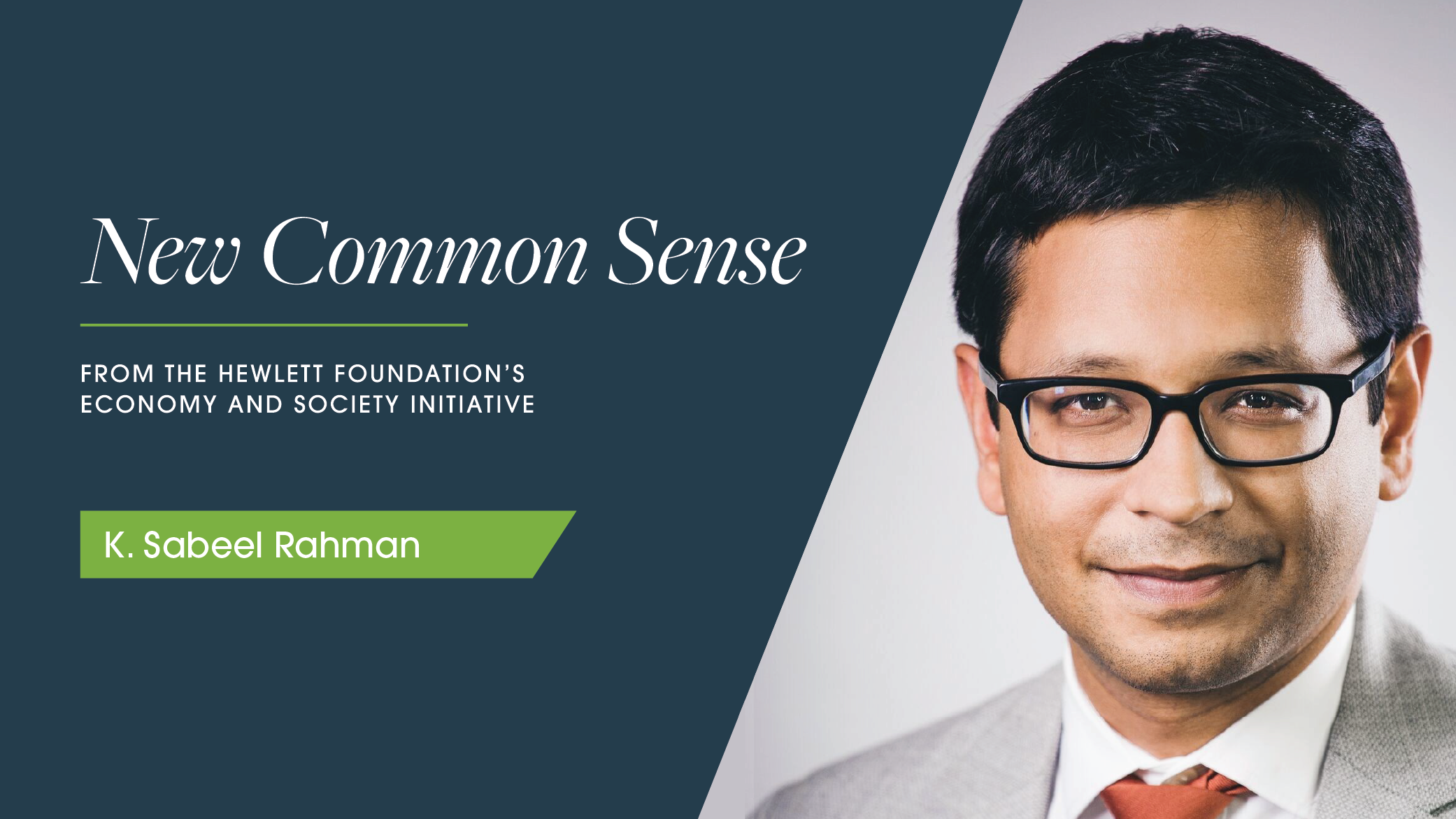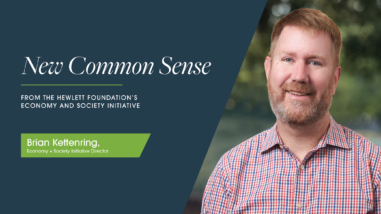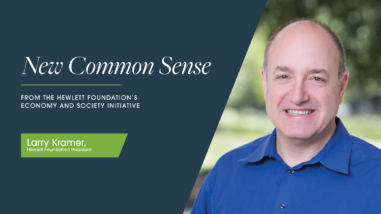Statecraft and policy design in the new political economy

But there is another front line in the conceptual and practical innovation toward a new economic paradigm: reimagining the underlying machinery and process of governance itself. Our ability to design and effectively implement post-neoliberal economic policies turns on our ability to redesign government itself. This is a particular challenge for those of us working to build a new economic paradigm, because neoliberalism was not just a theory of economic policy, it was also a particular vision of statecraft. It involved practices and presumptions that deliberately limited state capacity — through deregulation; a presumption against state action; imposition of restrictive models of efficiency, costs, and benefits in analyzing policy impacts; a default (racialized and gendered) hostility toward providing public benefits. At the same time, neoliberalism also unshackled state authority to enforce the terms of the neoliberal paradigm, through tactics including aggressive protections for property rights, investor interest, market-dominant actors, and state-backed hostility to worker rights.
I recently concluded my term as the head of the Biden Administration’s regulatory policy office, the Office of Information and Regulatory Affairs, where I had served since the start of the administration. In that role, I was responsible for coordinating the review and clearance of all major regulatory initiatives, from climate to immigration to the execution of the major spending programs under the American Rescue Plan, the Bipartisan Infrastructure Law, and the Inflation Reduction Act. In addition, I had the opportunity to launch and lead the effort to follow up on Biden’s Day One charge to modernize the regulatory review process itself, while serving as part of the broader leadership implementing other cross-government reform efforts, from the administration’s efforts on advancing equity and open government to the renewed focus on market competition. For me, this experience underscored the importance of developing new governance paradigms to complement the new economic paradigms that are coming into place.
Across a range of policy areas, the Biden Administration has been innovating novel approaches to governance that, taken together, point to the beginnings of what such a post-neoliberal vision of governance might look like. There are four key elements of post-neoliberal governance that are emergent in the current administration, and that future reform efforts should continue to develop.
Macro-scale policy planning and coordination
From infrastructure to industrial policy to market competition, the Biden Administration has made macroeconomic structure a central focus for public policy. This is an important shift away from presumptions of market rationality and efficiency to a more explicit effort to design markets in ways that serve the public good more effectively. But to do policy at this scale —whether it is in designing trillions of dollars of investment into the physical infrastructure of clean energy in equitable and effective ways, or designing regulations to restructure uncompetitive markets to better promote economic resiliency and dynamism — requires novel processes for designing policy itself.
Fundamentally, it requires a shift from a narrow focus on individual projects, rules, or grants to a holistic view of how hundreds of such initiatives intersect, combine, and ladder up to a larger transformation of our economy. Internally, the White House has created dedicated implementation leads for each of the major spending packages. These are not merely coordination bodies, though they play that role too — they are also very much interventions aimed at shifting the policy imaginary by knitting together disparate agencies, programs, and teams into a larger “whole of government” effort. Similarly, cross-cutting efforts around competition and equity have also been implemented through a combination of agency initiatives and across-the-board leadership from the White House aimed at coordinating, as much as creating, new cultures and orientations to policy.
Delivering benefits, services, and reimagining the safety net
One long-standing presumption in neoliberal statecraft is a skepticism of — if not outright hostility toward — government benefits programs, and the overly aggressive imposition of restrictions and heavy paperwork burdens. These were nominally intended to limit waste, fraud, and abuse, but instead served to make welfare programs punitive in ways that impacted vulnerable and marginalized communities along racialized, gendered, class-based, and geographic lines. By contrast, the burst of policy innovation spurred by the COVID-19 pandemic and the new governance common sense took a very different tack, focused on getting benefits quickly and painlessly to those who need it most.
This ethos is apparent in the administration’s flagship programs, such as the Child Tax Credit, which represented not only a historic drop in poverty, but also a notable new approach to designing and delivering a public benefit with a primary focus on ease of access, uptake, and equity — and to investing in deep partnerships between government and civil society actors on the ground to improve the program and reach those most in need.
While the administration’s student debt relief plan remains blocked by judicial fiat, early data shows that the effort to design a simple and accessible enrollment portal paid dividends, as lower-income Americans, and people of color in particular, were able to enroll at higher rates. Similar efforts helped streamline access to the administration’s eviction moratorium protections at the height of the pandemic response.
More broadly, the Biden Administration put in place a host of new protocols to shift standard practice on service delivery and benefit program design, emphasizing the priority of ease of access and simplicity, particularly for those services that kick in during the most urgent moments in people’s lives — like recovering from a disaster, retirement, birth and early childhood, and recovering from a financial shock. Agencies are now charged with proactively reducing the administrative burden that Americans face in trying to enroll in government benefits, taking into account not only how complex the forms are, but also whether enrollment requires documentation or extra steps that might be overly restrictive or onerous, particularly for those most urgently in need. The Justice40 Initiative similarly commits agencies to ensuring that major investments, particularly in climate and infrastructure, reach the low-income communities and communities of color often left behind.
Expanded and modernized policy analysis
Another common feature of neoliberal statecraft is an analytic paradigm that relies on conventional notions of cost-benefit analysis and economic efficiency, in ways that often squeeze out many other important policy values and that narrow the scope for more impactful and creative policy designs that could better address intergenerational harms like climate change, advance human dignity and equity, and attend to cumulative structural inequities and income inequality. The administration recently released an important revision to the regulatory review process, which, among other things, provides a much-needed update to the analytical framework for impact analysis. This new approach relies on more current data, evidence, and rigorous analytic best practices, while also overcoming many traditional limitations.
The revision has many new updates embedded in it. For instance, the new proposal updates the “discount rate” agencies ought to use to assess the present-day value of long-term impacts in the future. By moving from a 3% discount rate to 1.7%, we are able to make a significant improvement in our ability to more accurately count the benefits of climate change mitigation policies and other long-term investments. The new approach also provides for a much more nuanced and rigorous approach to distributional and equity analysis of regulations, tasking agencies with taking into account potentially problematic concentrations of harms or benefits on particular communities.
Combined with a new focus on supporting agencies in actually collecting the kinds of disaggregated data needed to assess impacts on vulnerable or marginalized communities, in order to drive more accurate and impactful policy, these guidelines represent an important foundation for equitable policymaking. More broadly, the revised analytic approach makes clear that many of the most important goals and impacts of regulations — particularly advancing values like dignity, equity, civil liberties, ecological sustainability, and more — are often hard to monetize and quantify, which in the past has left them cut out of conventional impact analysis. Instead, the new revision provides the methods and mandates for agencies to fully take these impacts into account, rather than bypassing them or shoehorning them into a constrained form of conventional cost-benefit analysis.
Participation, equity, and efficacy
Finally, another central dimension of post-neoliberal governance comes in the realm of process — how to better include the voices of those most impacted in shaping public policy, while doing so in ways that facilitate both equitable and efficient policymaking. From its latest Open Government National Action Plan to various executive orders on equity, regulatory policy, environmental justice, and Tribal consultation (among others), the administration has placed a consistent emphasis on more inclusive forms of policymaking, with federal agencies taking more proactive steps to affirmatively engage with the most impacted, vulnerable, and marginalized communities to inform their policy design.
Crucially, these efforts are meant to take place “upstream” — meaning at an earlier stage of policy formation, where diverse inputs can be more efficiently and meaningfully engaged to inform policy without creating overly cumbersome procedural hurdles. While there is much more to do on this front, both in terms of making these participatory measures meaningful, as well as designing the right systems to engage in such participatory processes quickly and efficiently, these efforts represent important first steps toward mainstreaming participatory governance at scale.
The work ahead
Building an inclusive political economy that helps communities flourish and thrive, and that tackles systemic crises from climate change to inequality to corporate power, requires not just new approaches to policy but also new systems for policymaking. These front lines of innovation — policy planning, service delivery, holistic analysis, and participation — represent new capacities that government needs to design and execute post-neoliberal policies effectively.
At the same time, governance reform does not happen in a vacuum, and too many of the current pathologies of policymaking processes stem not from a lack of good ideas, but a lack of political will and consensus around the fundamental goals of a more inclusive and equitable and dynamic political economy. As this work continues, it will be critical for practitioners across different arenas — civil society, grassroots organizing, policymaking, media, scholarship and research, philanthropy, and more — to work across silos to unlock the potential of a “new common sense” in political economic thought and policy.


